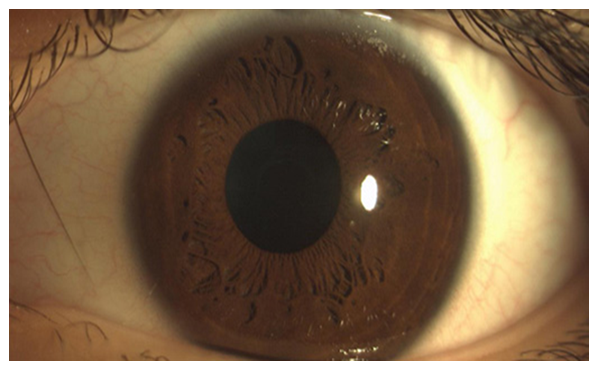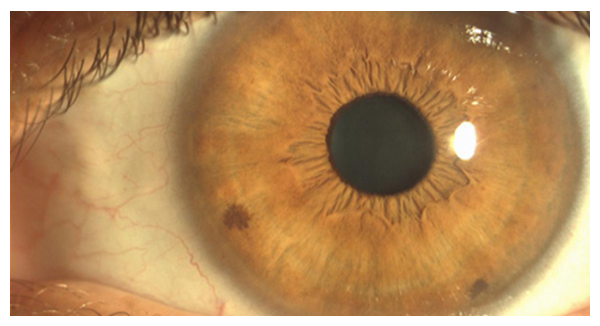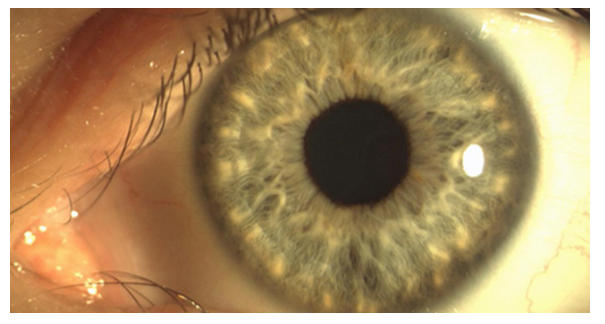-
Paper Information
- Next Paper
- Paper Submission
-
Journal Information
- About This Journal
- Editorial Board
- Current Issue
- Archive
- Author Guidelines
- Contact Us
American Journal of Medicine and Medical Sciences
p-ISSN: 2165-901X e-ISSN: 2165-9036
2024; 14(10): 2545-2547
doi:10.5923/j.ajmms.20241410.21
Received: Sep. 20, 2024; Accepted: Oct. 19, 2024; Published: Oct. 23, 2024

Criteria for Iridodiagnostic Elimination of Suicides Completed in the Practice of Forensic Medicine
Elieva M. F., Ruziev Sh. I., Ruzmetova S. A.
Tashkent Pediatric Medical Institute, Tashkent, Uzbekistan
Copyright © 2024 The Author(s). Published by Scientific & Academic Publishing.
This work is licensed under the Creative Commons Attribution International License (CC BY).
http://creativecommons.org/licenses/by/4.0/

The term suicide in science is used to denote the concept of voluntary death. According to published statistics, the suicide rate is currently constantly increasing in most countries of the world. But these data do not reflect the real scope of the problem, since only obvious, unquestionable cases of suicide fall into official statistics. The number of real cases is many times higher than the official statistics. This indicates not only the relevance, but also the global nature of this problem. Currently, everyone already knows that the iris of the eye is the most unsurpassed, among all the structures of the body, a reflector of congenital deficiencies or features fixed in human genetics. It is considered proven that it is impossible to find two people with exactly the same faces all over the world. This is especially true in relation to the eyes, since each person's iris is completely unique. She is so individual that she could provide an invaluable service to criminology and practical forensic medicine in matters of identity identification and even inherent congenital and acquired changes and the presence of diseases during her lifetime.
Keywords: Suicide, Women, Iridodiagnostics, Iris
Cite this paper: Elieva M. F., Ruziev Sh. I., Ruzmetova S. A., Criteria for Iridodiagnostic Elimination of Suicides Completed in the Practice of Forensic Medicine, American Journal of Medicine and Medical Sciences, Vol. 14 No. 10, 2024, pp. 2545-2547. doi: 10.5923/j.ajmms.20241410.21.
Article Outline
1. Introduction
- The term "suicide" in science is used to denote the concept of voluntary death. According to published statistics, the suicide rate is currently constantly increasing in most countries of the world. But these data do not reflect the real scope of the problem, since only obvious, unquestionable cases of suicide fall into official statistics. The number of real cases is many times higher than the official statistics. This indicates not only the relevance, but also the global nature of this problem [1,3,5].In this regard, it becomes especially relevant to search for markers that allow identifying people prone to suicidal states in order to carry out preventive measures with them in order to prevent cases of suicide [4].The purpose of the study: To develop prognostic and diagnostic markers in suicidal women.
2. Research Materials and Methods
- The objects of the study were 11 corpses of a woman who committed suicide, 36 corpses of persons who died suddenly, 27 living volunteers from among the students of TashPMI. The subject of the study was the iridodiagnostic features of the corpses of women who committed suicide. The research was carried out on the basis of the Department of Forensic Medicine and Medical Law at the National Academy of Medical Sciences of the Republic of Uzbekistan.
3. The Results of the Study
- The most anterior part of the vascular tract, located between the cornea and the lens, is called the iris and has the appearance of a plate or screen of slightly elliptical shape. Its peripheral edge goes beyond the corneal-scleral limb, passing into the ciliary body. The horizontal diameter of the iris is 14.5 mm, the vertical diameter is 14 mm. The iris does not form a plane perpendicular to the anatomical axis of the eye. This is due to the fact that the pupillary edge is slightly tilted forward, so the shell as a whole has the appearance of a truncated and very flattened cone. The thickness of the iris varies and, on average, is 400 mg.The role of the iris is not only to shield light, but also in the formation and outflow of intraocular fluid, ensuring a constant temperature of moisture in the anterior chamber by changing the lumen of the vessels.The pupillary opening located in the middle of the iris performs a very important function of the diaphragm, reflexively regulating the amount of light entering the eye. As a result of the continuous contractions of the pupil, the iris tissue is in motion all the time. The normal pupil width, which provides optimal conditions for high visual acuity, is 4 mm. It should be noted that the pupil width changes with age, in particular, in children under the age of 1, the pupil is quite narrow (up to 3 mm), it reacts weakly to light, the pupil becomes the widest in adolescence and young age, reaching a diameter of 4 mm. By old age, due to the loss of elasticity of the iris tissue, the pupil narrows, in parallel with which its ability to actively change the width is weakened.The photoenergetic function of the iris is focused on regulating the level of energy potential of the reticular formation. The latter is carried out, on the one hand, by correcting the magnitude of the luminous flux, through changes in the diameter of the pupil, and on the other hand, by changing the threshold sensitivity of the photoreceptors of the iris itself.According to modern concepts, the continuous autochthonous activity of reticular neurons is maintained due to their stimulation by afferent signals of different modalities, while afferent impulses of the retina are one of the dominant among a wide range of sensory modalities. According to morphological data, effective retinal signals stimulate areas of reticular formation in the brain stem, hypothalamus and spinal cord.Currently, there are more than 50 schemes and projection zones of the iris of the eye used in iridodiagnostics.The doctrine of iris somatotopy is associated with the name J. Peczeli (1986) first published a diagram of the projection of the human body on the iris.Of the numerous schemes of the projection zones of the iris, the most recognized ones can be distinguished. These include a large group of German-American schemes with a vertical arrangement of the human body along the iris.Another group of schemes, the New French one, is based on a different, embryological plan for projecting the human body onto the iris.From the infinite variety of structural combinations of the iris, reflecting the constitutional characteristics of a person, it is possible to identify several simplest types, there are five in total.In some people, the iris has the appearance of a fan made up of thin, well-fitted trabecular fibers. This type is called radial.In people with light eyes (blue, gray, green), it occurs 10 times more often than in dark-eyed people.According to our observations, irises of "dark brown" (64.6%) and "light brown" (13.2%) colors prevailed among student volunteers, and in other cases (22.2%) there were faces with light (gray – 10.2%; blue – 3.7%; blue – 6.4% and green – 3.1%).The irises of the most frequently encountered colors are shown in Figures 1-3.
 | Figure 1. The iris is "dark brown" in color |
 | Figure 2. The iris is "light brown" in color |
 | Figure 3. The "gray" iris |
4. Conclusions
- The iridodiagnostic features of persons prone to suicidal behavior include irises with weak or very weak density, locally deformed and rounded-thickened types of iris relief, pupil deformations, slagging of autonomous rings, ruptures and deformations of autonomous rings, pigmented and toxic spots, adaptive rings, lymphotic rosaries and dystrophic rims.
 Abstract
Abstract Reference
Reference Full-Text PDF
Full-Text PDF Full-text HTML
Full-text HTML